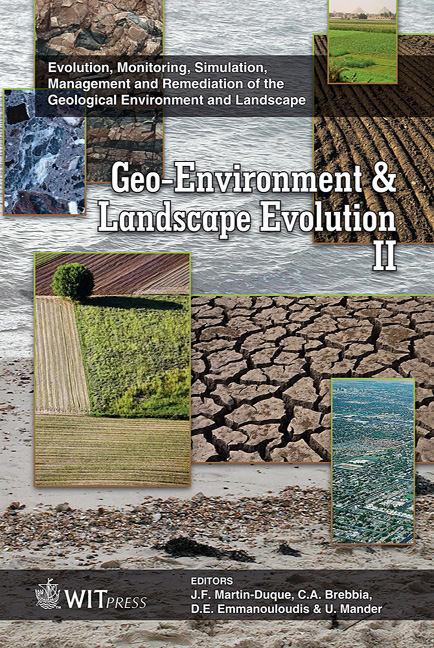Large Scale Soil Erosion Modeling For A Mountainous Watershed
Price
Free (open access)
Transaction
Volume
89
Pages
13
Published
2006
Size
1622 kb
Paper DOI
10.2495/GEO060071
Copyright
WIT Press
Author(s)
P. Zhou, J. Nieminen, T. Tokola, O. Luukkanen & T. Oliver
Abstract
Soil erosion control requires a quantitative evaluation of potential soil erosion on a specific site. The Revised Universal Soil Loss Equation (RUSLE), Remote Sensing (RS), and Geographic Information System (GIS) were used to model soil erosion intensity for soil conservation and vegetation rehabilitation in an Upper Min River (UMR) watershed, which is in the Upper Yangtze River basin. Data used in this study to generate the soil loss were Landsat Enhanced Thematic Mapper (ETM) images, Digitized Elevation Model (DEM), soil erodibility, rainfall erosivity, and inventory data. The non-parametric k-nearest neighbor (k- NN) method was used to produce the cover management map by integrating the ETM images and vegetation coverage data measured in the 625 sample plots. The root mean square errors and significance of biases at pixel level were evaluated in order to find optimal parameters. Four raster maps have been produced for the soil erodibility, rainfall erosivity, slope length and steepness, and cover management factor, and the map with different soil loss risks has been produced for soil erosion potential. The result can be beneficial to the erosion control and ecological restoration in the degraded mountainous watershed. Keywords: soil erosion, RUSLE, DEM, k-NN method, Upper Min River Watershed. 1 Introduction Soil erosion is a worldwide environmental problem that degrades soil productivity and water quality, causes sedimentation and increases the
Keywords
soil erosion, RUSLE, DEM, k-NN method, Upper Min RiverWatershed.





